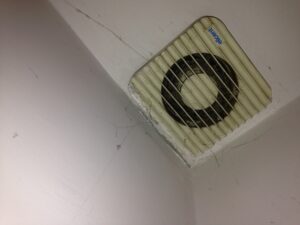
Understanding Hair Dryer Amperage and Circuit Breakers
Have you ever had your hair dryer trip a circuit breaker while you’re getting ready in the morning? It’s a frustrating scenario—your blow dryer powers on, then suddenly everything stops as the breaker trips. This is often caused by the hair dryer’s high amp draw overloading your home’s circuit. Understanding hair dryer amperage and how to manage it can help prevent these interruptions.
Hair Dryer Amps and Wattage
Modern hair dryers typically use between 1,500 to 1,875 watts, translating to 12 to 15 amps on a standard 120-volt circuit. Compared to older models from the 1970s that only required around 750 watts (6 amps), today’s hair dryers demand significantly more power for faster and more efficient drying.
To calculate how many amps your specific hair dryer uses, divide the wattage by the voltage. For example:
1,875 watts ÷ 120 volts = 15.6 amps
This amp draw alone can max out a standard 15-amp circuit, especially in older homes. Adding other devices to the same circuit increases the risk of tripping the breaker.
Why Does My Hair Dryer Trip the Breaker?
Hair dryers trip breakers because they pull a significant amount of current, especially on circuits shared with other devices. If your breaker trips regularly while using your blow dryer, it’s likely due to one or more of the following reasons:
- Overloaded Circuit: Too many appliances or devices plugged into the same circuit.
- High Amp Draw of Hair Dryer: A 1,875-watt hair dryer on a 15-amp circuit leaves little room for additional load.
- Outdated Wiring: Older homes often have 15-amp circuits that struggle to handle the demands of modern appliances.
Preventing Hair Dryer Short Circuits
To avoid frequent breaker trips when using your hair dryer, consider the following tips:
- Limit Other Devices: Unplug other appliances like heaters or fans from the same circuit. This reduces the overall load and leaves more capacity for your hair dryer’s amp draw.
- Upgrade Your Circuit: If your home’s circuits can’t handle the 15 amps required by modern hair dryers, consider upgrading to 20-amp circuits. An electrician can add dedicated circuits to accommodate high-wattage appliances.
- Use a Lower-Wattage Hair Dryer: If rewiring isn’t an option, opt for a hair dryer with a lower wattage to reduce amp draw.
- Switch to GFCI Outlets: Ground Fault Circuit Interrupter (GFCI) outlets are safer for high-draw appliances like hair dryers and help protect against electrical faults.
Amperage and Hair Dryer Safety
Using a hair dryer on an overloaded circuit can not only trip breakers but also increase the risk of overheating or electrical fires. Always check your hair dryer’s wattage and ensure your home’s electrical system can handle its amp draw.
If your hair dryer continues to trip breakers or you’re unsure about your home’s electrical capacity, consult a licensed electrician. Upgrading your electrical system can provide peace of mind and keep your appliances running smoothly.
Ready to Upgrade Your Electrical System?
Whether you need help calculating amp draw, upgrading circuits, or rewiring an older home, Prairie Electric is here to help. Contact us today to ensure your electrical system can safely support all your devices—including your hair dryer.


